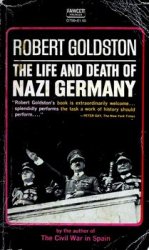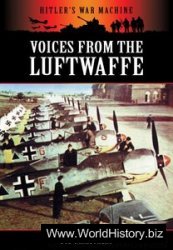On the night of 20 October, Hofi ordered units of an Israeli parachute brigade and those of the ‘Golani’ Brigade to recapture the Israeli position on Mount Hermon. The paratroopers, who were to attack from the heights of the Hermon downwards, were ordered to capture the Syrian positions while the ‘Golani’ units, who were ordered to move up from below, were directed towards the Israeli position that had fallen with the outbreak of war. At 14.00 hours on 21 October, the paratroop forces were lifted by helicopter with fighter aircraft covering them. A battalion under Lieutenant-Colonel Hezi secured the helicopter landing areas, and its mission was to clear the area up to half a mile from the Syrian position, the taking of which would be the responsibility of Lieutenant-Colonel Elisha’s battalion. Taking the Syrians by surprise with an unexpected attack early in the afternoon, and supported by the Air Force and by Israeli artillery, the leading force under Hezi had to advance about five miles along the crest of Mount Hermon (8,200 feet high) with Syrian artillery endeavouring to intervene. Three Syrian helicopters approached, but all crashed on the hillside, apparently hit by artillery. The Syrians threw in their Air Force and Hezi’s advancing forces looked down on the dogfights taking place below them. As darkness came on, his battalion stormed the Syrian so-called ‘Serpentine’ position: the officer leading the attack was killed, but the Syrian commandos in the position broke and fled, leaving seven dead. Hezi continued to mop-up until they reached another Syrian position. On their way they reached a rocky formation, which they mopped-up without loss. Later, they were to discover that this position, which was the Syrian command post on the Hermon, had received a direct hit from Israeli artillery. There were twelve Syrian dead inside and this fact could account for the comparatively poor showing of the Syrian commandos in defence of the Hermon. Elisha’s battalion now moved through with artillery support and stormed the main Syrian position, which was found to be empty. By 03.30 hours in the morning of 22 October, the Syrian part of Mount Hermon was in the hands of the paratroopers for the loss of one killed. Elisha prepared his forces to move towards the Israeli position on Hermon in case they should be ordered to do so by the Northern Command.
Meanwhile, the ‘Golani’ forces moved up along three routes, advancing as they had in the fruitless counterattack early in the war. They were led on
3o6 the yom kippur war, 1973
The main road by five tanks. When they reached the area where their attack had been broken on 7 October, they were engaged by covering Syrian forces, which lay in readiness observing their advance. A comparatively large enemy force of commandos, over a battalion in strength, was scattered over the rocky hillside in holes and behind rocks, each soldier equipped with telescopic sights for day and night firing, and with anti-tank missiles deployed to prevent the advance of the supporting Israeli tanks. The Syrians, difficult to identify in the darkness, picked off the Israeli soldiers one by one. The Israeli brigade commander and a battalion commander, who were with the leading group, were wounded. Two companies of ‘Golani’ reinforcements were flown up and the paratroopers were ordered to begin to move down, but the ‘Golani’ forces, fighting desperately without their commanders, and in a situation that had now become critical, achieved their mission without outside help. As things looked their blackest and the situation seemed hopeless, the brigade operations officer took command, gathered his broken forces under heavy fire and personally led the last desperate assault. The Syrians broke as, one by one, they were winkled out of their holes and from behind the boulders. By 10.00 hours on 22 October Mount Hermon was again in Israeli hands. This attack alone cost the ‘Golani’ Brigade 51 killed and 100 wounded. Some days later a young sergeant of ‘Golani’, speaking in a heavy oriental accent, told the story of the battle on Israeli television in a matter-of-fact manner: ‘We were told that Mount Hermon is the eyes of the State of Israel, and we knew we had to take it, whatever the cost.’
On the evening of 22 October, the Syrians accepted a cease-fire proposed by the United Nations Security Council. They had lost some 1,150 tanks in the battle, in addition to well over 100 Iraqi tanks and some 50 Jordanian tanks. In the Golan Heights alone, 867 Syrian tanks were recovered by the Israelis (of great significance being the fact that many of them were in good running order); 370 Syrian prisoners fell into Israeli hands and it was estimated that they had lost some 3,500 troops killed.
On the Israeli side, every single Israeli tank in battle was hit at one stage or another, but the men of the Ordnance Corps excelled in their heroism and ability to improvise, moving around in battle and repairing the tanks under fire. Some 250 Israeli tanks were knocked out, of which almost 100 were a total loss; the remainder were repaired. Israeli casualties were some 111 killed, 2,453 wounded and 65 prisoners, including pilots. In his characteristically quiet and unassuming manner. General Hofi had led the forces of Northern Command to a brilliant victory in a battle waged initially under the most adverse circumstances. He commanded his team of outstanding divisional commanders in a resolute and effective manner. The absence of controversy and recrimination about the Golan campaign reflects in no small measure the success of his leadership. The Israel Defence Forces had fought a battle which, perhaps more than any other, revealed the true quality of the Israeli troops and of the Israeli people.




 World History
World History









